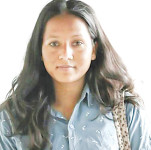
We use Google Cloud Translation Services. Google requires we provide the following disclaimer relating to use of this service:
This service may contain translations powered by Google. Google disclaims all warranties related to the translations, expressed or implied, including any warranties of accuracy, reliability, and any implied warranties of merchantability, fitness for a particular purpose, and noninfringement.

Highlights
- No party seemed to be sincere in the principle of proportional inclusion. For oppressed communities and classes Even the party that embraces revolutionary ideas was seen as weak in selecting proportional representatives.



The state is standing on the foundations of a new order. In this system there is a changing government and a repeating person. Those people represent from the same class, gender and community. who have repeatedly trampled on the issue of proportional inclusion. On June 31, Prime Minister KP Sharma Oli led the government.

The 22-member cabinet, including two deputy prime ministers, is incomplete in terms of proportional representation. There is no ethnic, gender and regional representation. Two of the four major parties sent one woman each to the cabinet. The rest of the team could not send women. While the question of 51 percent female participation is being raised, only 9 percent of women's participation in the cabinet seems very weak, while 33 percent of women participate in parliament. Representation of Dalits and Muslims in the Council of Ministers is zero.
The same political character is seen in the behavior of the Maoists who say they will build a new system. On February 21, 2080, in the government led by Pushpa Kamal Dahal, UML, Maoists, United Socialists, RSVP and JSAP agreed on a power partnership. At that time, the Council of Ministers had 20 members, but not a single person from the Dalit community. On June 29, 2078, four parties were involved in the government led by Sher Bahadur Deuba. Out of 22 ministers and three state ministers, one Dalit got an opportunity.
Incomprehensive character is not only in the government but also in the parties. There is a difference in the selection process for proportional representation in the province and the House of Representatives. On October 2 and 3, 2079, the political parties had submitted the closed list of proportional candidates for the provinces and the House of Representatives to the Election Commission. But none of the parties seemed sincere in the principle of proportional inclusion. The Maoist, who advocated revolutionary ideas for the oppressed communities and classes, presented a weak intention in the selection of proportional representatives. Therefore, preference was given to Krishna Bahadur Mahara, who took state and parliamentary benefits. From the Congress, the person who is sucking the juice of power has been moved forward. Among them Arju Rana Deuba, wife of former Prime Minister Deuba, Prakashsharan Mahat, who has been minister many times, Vimalendra Nidhi, Farmullah Mansur and Gopalman Shrestha were in the proportional list.
UML seems to have a slightly different opinion on the issue of proportional inclusion. To eliminate gender inequality, he has proportionally made 52 percent female candidates in the House of Representatives and 54 percent in the Provincial Assembly. Among the 110 proportional candidates in the House of Representatives, 57 are women and 53 are men. UML has made gender representation more important than caste representation. However, it is clear that high priority was given to women who reached the elite class and the state. The integrated socialist does not seem to follow the constitution fully.
According to a study conducted by the World Bank and the British Development Agency (DFID) in the year 2062, before the formation of the Constituent Assembly, around 90 percent of the Bahun-Kshetri dominated all parts of the state, while the representation of Dalits was negligible. According to the First, Second and Third House of Representatives Election Result Book 2056, the caste representation of Bahun-Kshetri in the House of Representatives formed in 2048, 2051 and 2056 was 57.07, 63.90 and 61.46 percent respectively. At that time the representation of tribals was 22.42, 17.55 and 18.53 percent respectively. Likewise, the representation of Madhesi was 20, 18.53 and 20 percent respectively. Dalit representation was 0.48, zero and zero respectively.
According to the data of proportional representation of four elections namely 1st Constituent Assembly 2064, 2nd Constituent Assembly 2070, General Election 2074 and 2079, the representation of neglected marginalized communities has increased somewhat in the first Constituent Assembly election. After the Second Constituent Assembly, the ethnic representation of backward communities is decreasing, while the representation of Khasarya is increasing. Looking at it as a caste, the proportional representation of Khasarya in those four elections is 34.95, 42.26, 43.27 and 47.27 percent. Similarly, the proportional representation of tribals is 28.07, 23.63, 23.27 and 24 percent respectively. The representation of Madhesi is 19.5, 18.8, 17.09 and 16 percent. The proportional representation of Dalit community is 8.4, 6.66, 6.9 and 5.82 percent. The representation of Tharu community is 6.05, 6.49, 6.18 and 4.73 percent while the representation of Muslims is 3.03, 2.16, 3.27 and 2.18 percent.
According to the World Population Review, an organization that works on the population data of different countries in the world, 93 countries are adopting the proportional election system. Similarly, according to the report of research organizations like International Crisis Group, Nepal is the fourteenth country in the world in the list of inclusion. Therefore, the government and the big political parties should not be irresponsible to literally implement the rights of the marginalized communities written in golden letters in the constitution. Now the representation of every community in the structure of every party and state should be made not only proportional, but completely proportional.
 प्रकाशित : आश्विन ३, २०८१ ०७:३१
प्रकाशित : आश्विन ३, २०८१ ०७:३१

 २३.१२°C काठमाडौं
२३.१२°C काठमाडौं










